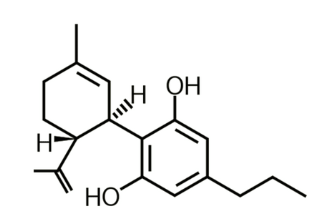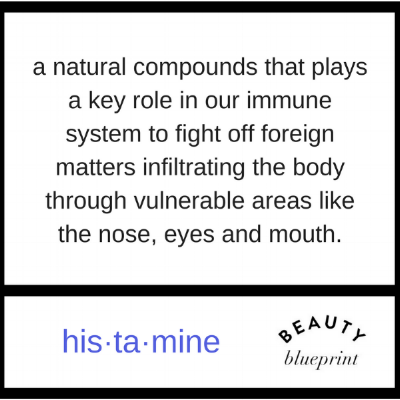THC and CBD… is that it?
Acting as the two main “ingredients” in marijuana, they’re scientifically called cannabinoids.
But, little do most know, there are DOZENS, if not hundreds, of different cannabinoids in the cannabis plant.
Here, we explore the most studied - All 10 of them.
THC
Often known as marijuana’s “flagship” cannabinoid, THC is the poster boy of weed, and is scientifically named Delta(9)-Tetrahydrocannabinol.
As one of the “main” active ingredients in weed, this is what turns you from sober to stoned!.
Not only does it get you high, but it has medicinal values to it as well!s.
It can treat:
Crohn’s disease
Neuropathy
PTSD
Cancer
Alzheimer’s
Multiple Sclerosis
Parkinson’s
Arthritis
Asthma
Glaucoma
AIDS/HIV
THC is obviously quite diverse in its abilities to treat diseases, and is held in high esteem among cannabis lovers.
BD
As you can expect, after THC, there is CBD.
Known as Cannabidiol, this is the cannabinoid most associated with medicinal properties.
With it’s great healing capabilities, here are some of the illnesses or issues that it can help alleviate:
Pain relief and inflammation
Epilepsy
Multiple Sclerosis
Anticancer
Schizophrenia
Anti-tumor
Anti-anxiety
There are even more benefits to CBD than what’s listed.
This video below will tell you everything you need to know about CBD.
CBC
Unbeknownst to most, there are more than two ingredients inside of marijuana.
One of the more recent discoveries is a cannabinoid called Cannabichromene – CBC for short.
Although the average pot smoker is ignorant to the fact that this exists, CBC is the third most common cannabinoid in weed, and can even rival the amount of CBD content in certain strains!
CBC does NOT get you “high”… The receptors that it binds to are linked to pain perception – the Vanilloid Receptor 1 (TRPV) and the Transient Receptor Ankyring 1 (TRPA1).
CBC has some of its own unique medical properties.
They include:
Anti-fungal
Anti-bacterial
Antidepressant
Encourages new brain cell growth (neurogenesis)
Anti-inflammatory
There was a study done that says it even helps digestive issues associated with diarrhea and constipation. While these benefits can be found within the cannabinoid CBC, they work even better in tandem with THC. This effect is known as the entourage effect. Essentially, isolating CBC and creating a product of just pure CBC would NOT be as effective without its other cannabinoid friends.
CBN
CBN, or Cannabinol, can be found as a metabolite of THC.
Due to the oxidation of the plant’s chemicals, this means that it’s a byproduct of THC through the aging process..
Among having similar benefits that the other cannabinoids have, its most notable characteristic is that it promotes bone growth.
In most cannabis plants, THC can go up to around 30%.
In comparison, CBN RARELY exceeds 1%!
As for a more mainstream application of this cannabinoid, it would be best suited for its sleep aid properties.
When you’re feeling tired from smoking cannabis, it’s likely due to cannabinol.
CBG
CBG, or Cannabigerol, is known to treat digestive issues, glaucoma, cancer, skin conditions, and acts as both an antiseptic and a neuroprotective.
As a precursor to THC, CBG converts into THC as marijuana matures over time.
Because of this, there is often a lower amount in most strains. CBG can usually be found in amounts up to 1% of the plant!
But without CBG, we wouldn’t have the weed we know and love today. It is the “mother cannabinoid” and we have it to thank for producing our desired THC and CBD molecules.
However, CBG has properties that can be utilized for medical purposes so growers and researchers are working on finding ways to increase the amount found in plants.
Since it’s a precursor, some breeders are experimenting with selective genetics and extraction of CBG in the earlier stages of cannabis growth.
THCv
If you can pronounce this properly on your first try, you deserve an award.
Tetrahydrocannabivarin is a chemical structure that is very similar to that of THC, and will help potentiate the effects of it.
Similar to THC, THCv has some great benefits attached to it.
THCv is an anticonvulsant, neuroprotective, and more uniquely, it can even promote weight loss!
In this study, it shows that THCv has potential for reducing body fat and increasing energy levels.
Additionally, a study by GW pharmaceuticals showed promising evidence for THCv treating Type 2 diabetes.
CBDv
CBDv, or Cannabidivarin, is to CBD what THCv is to THC.
Mostly found in indicas, this cannabinoid has powerful anti-convulsant properties and is shown to suppress the expression of genes associated with epilepsy! GW pharmaceuticals actually began a Phase II for clinical studies of cannabidivarin in epilepsy in 2015.
They’re planning for CBDv to become “the next generation of standard epilepsy medication”.
Although it is a very confident statement, the future is looking bright for cannabinoids becoming legitimate medicines for a huge list of diseases and disorders.
Delta(8) – THC
Delta-9-Tetrahydrocannabinol is what we refer to as THC normally but, did you know there is a Delta-8-Tetrahydrocannabinol as well?!
Although it is quite similar to Delta-9-THC, its potency is nowhere near as strong.
They do, however, have similar effects which include:
Antiemetic,
Appetite-stimulating
Anti-nausea
Anticancer
Antitumoral
The U.S. National Cancer Institute conducted research to confirm the benefits Delta-8-THC.
Even though these were studies conducted by the NCI, which is funded by the government, we’ve still seen these chemicals demonized by the same government and not approved by the FDA…
THCa
The last two cannabinoids (that you didn’t know about) are to be found in the plant substance before they’re decarboxylated.
This means that you don’t receive their unique benefits if you heat them up.
But what exactly are these benefits?
Anti-inflammatory
Antioxidant
Improves gastrointestinal functions
Neuroprotective
Antiemetic
Insecticide
The insecticide capabilities in THCa may prove to be useful by adding raw cannabis oil to lotions and creams for topical use.
These benefits present a good reason as to why individuals may consider consuming raw cannabis!
Some might even say… superfood!
CBDa
As with THCa, CBDa’s benefits can only be redeemed if you eat them raw.
Anti-inflammatory
Antioxidant
Painkiller
Anti-proliferative
Anti-proliferatives help slow the spread of malignant cells in the body.
So combined with the other anti-cancer properties of the other cannabinoids we’ve mentioned, the cannabis plant in raw form could be a powerful cancer-fighting substance.
Conclusion about Cannabinoids:
Marijuana plays hosts to plenty of “ingredients” that can help with several different medical issues.
Researchers and growers are working desperately to extract certain cannabinoids to help with specific problems, which will eventually become a huge help in the medical field.
For now in MN, we rely on the benefits of CBD rich extracts. Shop www.evoqbeauty.com
This Blog was grasciously provided by http://grass.fm/blog/10-cannabinoids-you-didnt-know-about/






















































